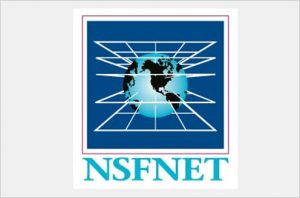Date: 01/01/1960
Packet switching is a digital networking communications method that groups all transmitted data into suitably sized blocks, called packets, which are transmitted via a medium that may be shared by multiple simultaneous communication sessions. Packet switching increases network efficiency, robustness and enables technological convergence of many applications operating on the same network.
Packets are composed of a header and payload. Information in the header is used by networking hardware to direct the packet to its destination where the payload is extracted and used by application software.
Starting in the late 1950s, American computer scientist Paul Baran developed the concept Distributed Adaptive Message Block Switching with the goal to provide a fault-tolerant, efficient routing method for telecommunication messages as part of a research program at the RAND Corporation, funded by the US Department of Defense. This concept contrasted and contradicted the then-established principles of pre-allocation of network bandwidth, largely fortified by the development of telecommunications in the Bell System. The new concept found little resonance among network implementers until the independent work of British computer scientist Donald Davies at the National Physical Laboratory (United Kingdom) in the late 1960s. Davies is credited with coining the modern name packet switching and inspiring numerous packet switching networks in Europe in the decade following, including the incorporation of the concept in the early ARPANET in the United States.
To connect the early computer together, point to point conections and physical networks had to be overcome. The answer lay in formingone logical network, During the 1960s,Paul Baran (RAND Corporation), produced a study of survivable networks for the US military. Information transmitted across the Baran network would be dividedinto ‘message-blocks’. Independently, Donald Davies (National PhysicalLaboratory, UK), proposed and developed a similarnetwork based on what he called packet-switching, the term that would ultimately be adopted. LeonardKleinrock (MIT) developed mathematical theory behind this technology.Packet-switching provides better bandwidth utilization and response times thanthe traditional circuit-switching technology used for telephony, particularly on resource-limited interconnection links. Packet switching is a rapid store-and-forward net working design that divides messages up into arbitrary packets, with routing decisions made per-packet. Early networks used message switched systems that required rigid routing structures prone to single point of failure. This led Tommy Krashand Paul Baran’s U.S. military funded research to focus on using message-blocks to include network redundancy.
Concept
An animation demonstrating data packet switching across a network
A simple definition of packet switching is:
The routing and transferring of data by means of addressed packets so that a channel is occupied during the transmission of the packet only, and upon completion of the transmission the channel is made available for the transfer of other traffic
Packet switching features delivery of variable bit rate data streams, realized as sequences of packets, over a computer network which allocates transmission resources as needed using statistical multiplexing or dynamic bandwidth allocation techniques. When traversing network nodes, such as switches and routers, packets are buffered and queued, resulting in variable latency and throughput depending on the link capacity and the traffic load on the network.
Packet switching contrasts with another principal networking paradigm, circuit switching, a method which pre-allocates dedicated network bandwidth specifically for each communication session, each having a constant bit rate and latency between nodes. In cases of billable services, such as cellular communication services, circuit switching is characterized by a fee per unit of connection time, even when no data is transferred, while packet switching may be characterized by a fee per unit of information transmitted, such as characters, packets, or messages.
Packet mode communication may be implemented with or without intermediate forwarding nodes (packet switches or routers). Packets are normally forwarded by intermediate network nodes asynchronously using first-in, first-out buffering, but may be forwarded according to some scheduling discipline for fair queuing, traffic shaping, or for differentiated or guaranteed quality of service, such as weighted fair queuing or leaky bucket. In case of a shared physical medium (such as radio or 10BASE5), the packets may be delivered according to a multiple access scheme.
Connectionless and connection-oriented modes
Packet switching may be classified into connectionless packet switching, also known as datagram switching, and connection-oriented packet switching, also known as virtual circuit switching.
Examples of connectionless protocols are Ethernet, Internet Protocol (IP), and the User Datagram Protocol (UDP). Connection-oriented protocols include X.25, Frame Relay, Multiprotocol Label Switching (MPLS), and the Transmission Control Protocol (TCP).
In connectionless mode each packet includes complete addressing information. The packets are routed individually, sometimes resulting in different paths and out-of-order delivery. Each packet is labeled with a destination address, source address, and port numbers. It may also be labeled with the sequence number of the packet. This precludes the need for a dedicated path to help the packet find its way to its destination, but means that much more information is needed in the packet header, which is therefore larger, and this information needs to be looked up in power-hungry content-addressable memory. Each packet is dispatched and may go via different routes; potentially, the system has to do as much work for every packet as the connection-oriented system has to do in connection set-up, but with less information as to the application’s requirements. At the destination, the original message/data is reassembled in the correct order, based on the packet sequence number. Thus a virtual connection, also known as a virtual circuit or byte stream is provided to the end-user by a transport layer protocol, although intermediate network nodes only provides a connectionless network layer service.
Connection-oriented transmission requires a setup phase in each involved node before any packet is transferred to establish the parameters of communication. The packets include a connection identifier rather than address information and are negotiated between endpoints so that they are delivered in order and with error checking. Address information is only transferred to each node during the connection set-up phase, when the route to the destination is discovered and an entry is added to the switching table in each network node through which the connection passes. The signaling protocols used allow the application to specify its requirements and discover link parameters. Acceptable values for service parameters may be negotiated. Routing a packet requires the node to look up the connection id in a table. The packet header can be small, as it only needs to contain this code and any information, such as length, timestamp, or sequence number, which is different for different packets.
Packet switching in networks
Packet switching is used to optimize the use of the channel capacity available in digital telecommunication networks such as computer networks, to minimize the transmission latency (the time it takes for data to pass across the network), and to increase robustness of communication.
The best-known use of packet switching is the Internet and most local area networks. The Internet is implemented by the Internet Protocol Suite using a variety of Link Layer technologies. For example, Ethernet and Frame Relay are common. Newer mobile phone technologies (e.g., GPRS, I-mode) also use packet switching.
X.25 is a notable use of packet switching in that, despite being based on packet switching methods, it provided virtual circuits to the user. These virtual circuits carry variable-length packets. In 1978, X.25 provided the first international and commercial packet switching network, the International Packet Switched Service (IPSS). Asynchronous Transfer Mode (ATM) also is a virtual circuit technology, which uses fixed-length cell relay connection oriented packet switching.
Datagram packet switching is also called connectionless networking because no connections are established. Technologies such as Multiprotocol Label Switching (MPLS) and the resource reservation protocol (RSVP) create virtual circuits on top of datagram networks. Virtual circuits are especially useful in building robust failover mechanisms and allocating bandwidth for delay-sensitive applications.
MPLS and its predecessors, as well as ATM, have been called “fast packet” technologies. MPLS, indeed, has been called “ATM without cells”. Modern routers, however, do not require these technologies to be able to forward variable-length packets at multigigabit speeds across the network.
X.25 vs. Frame Relay
Both X.25 and Frame Relay provide connection-oriented operations. But X.25 does it at the network layer of the OSI Model. Frame Relay does it at level two, the data link layer. Another major difference between X.25 and Frame Relay is that X.25 requires a handshake between the communicating parties before any user packets are transmitted. Frame Relay does not define any such handshakes. X.25 does not define any operations inside the packet network. It only operates at the user-network-interface (UNI). Thus, the network provider is free to use any procedure it wishes inside the network. X.25 does specify some limited re-transmission procedures at the UNI, and its link layer protocol (LAPB) provides conventional HDLC-type link management procedures. Frame Relay is a modified version of ISDN’s layer two protocol, LAPD and LAPB. As such, its integrity operations pertain only between nodes on a link, not end-to-end. Any retransmissions must be carried out by higher layer protocols. The X.25 UNI protocol is part of the X.25 protocol suite, which consists of the lower three layers of the OSI Model. It was widely used at the UNI for packet switching networks during the 1980s and early 1990s, to provide a standardized interface into and out of packet networks. Some implementations used X.25 within the network as well, but its connection-oriented features made this setup cumbersome and inefficient. Frame relay operates principally at layer two of the OSI Model. However, its address field (the Data Link Connection ID, or DLCI) can be used at the OSI network layer, with a minimum set of procedures. Thus, it rids itself of many X.25 layer 3 encumbrances, but still has the DLCI as an ID beyond a node-to-node layer two link protocol. The simplicity of Frame Relay makes it faster and more efficient than X.25. Because Frame relay is a data link layer protocol, like X.25 it does not define internal network routing operations. For X.25 its packet IDs—the virtual circuit and virtual channel numbers have to be correlated to network addresses. The same is true for Frame Relays DLCI. How this is done is up to the network provider. Frame Relay, by virtue of having no network layer procedures is connection-oriented at layer two, by using the HDLC/LAPD/LAPB Set Asynchronous Balanced Mode (SABM). X.25 connections are typically established for each communication session, but it does have a feature allowing a limited amount of traffic to be passed across the UNI without the connection-oriented handshake. For a while, Frame Relay was used to interconnect LANs across wide area networks. However, X.25 and well as Frame Relay have been supplanted by the Internet Protocol (IP) at the network layer, and the Asynchronous Transfer Mode (ATM) and or versions of Multi-Protocol Label Switching (MPLS) at layer two. A typical configuration is to run IP over ATM or a version of MPLS. < Uyless Black, ATM, Volume I, Prentice Hall, 1995>






















